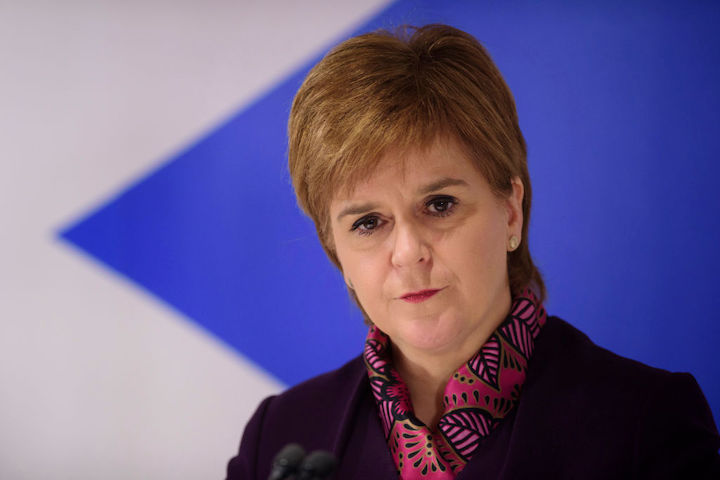Will no one think of the middle classes? It’s not the most stirring call to arms. When Scottish Labour MSP Michael Marra complained that ‘the doors are closed’ at universities to ‘Scottish pupils from ordinary families and an average school’, Nicola Sturgeon quipped that she ‘used to be regularly criticised for the fact that too few young people from deprived communities were going to university’, but now she was ‘being criticised for the fact that too many of them are going to university’.
As ever with Sturgeon, the rhetoric is facile and the reality much more prosaic. That more young people from disadvantaged backgrounds are getting into university is no bad thing, but nor is it a symbol of an egalitarian Scotland. Marra was speaking about Edinburgh university, which accepted no students from the least disadvantaged backgrounds to study law last year. More than half of the 1,205 successful applicants were from deprived areas, underperforming schools or came from a disadvantaged background.
Edinburgh assigns a flag to applicants from the 40 per cent most deprived areas in Scotland and a ‘plus flag’ to the acutely disadvantaged. ‘Plus flags’, which are given to the 20 per cent most deprived, care-experienced people and refugees, are typically guaranteed a place, according to the BBC. Marra told the Scotsman there were ‘hundreds of ordinary young Scots applying to our top universities who in reality have no chance of getting in’.
Young Scots face being priced out of their own universities
While it’s easy to mischaracterise his comments as a plea for the privileged, he is in fact making a broader point about Scotland’s broken education system. Students who are ordinarily resident in Scotland have their undergraduate tuition fees capped at £1,820 per annum. Known as ‘home fees’, these are paid by the Student Awards Agency for Scotland, an executive agency of the Scottish government, meaning Scottish students effectively enjoy free higher education. Students ordinarily resident in the rest of the UK who secure a place at a Scottish university must pay for their studies, with the annual charge capped at £9,250.
The real money-spinner is international students. A Scottish undergraduate applying for Glasgow university’s five-year medical degree will pay no fees, an English student will pay £9,250 per annum, and an international applicant will be charged £53,460 a year. Over the 15 years to 2021, there was a 56 per cent increase in Scottish applications to Scottish universities and a 47 per cent rise in acceptances — but an 84 per cent rise in rejections.
Reform Scotland reports a 105 per cent increase in non-EU students over the last decade and a half, with more than a third of undergraduates at St Andrews coming from outside the UK and the EU. Scottish universities accept only 55 per cent of Scottish applications, compared to a 74 per cent acceptance rate for domestic applications south of the border. The Holyrood education committee has warned Scottish higher education funding is ‘structurally reliant on international fees, with this source of revenue forecast to overtake Scottish government funding as a percentage of the sector’s total income in 2023-24’.
Young Scots therefore face being priced out of their own universities. Flagging disadvantaged students to make admissions more socio-economically inclusive appears to be progressive but is systemically regressive; it provides a social justice fig leaf for an education regime that begins failing poorer youngsters much earlier than university.
One of the reasons why universities feel the need to implement positive discrimination in admissions decisions is that pupils from the most disadvantaged backgrounds do significantly worse than those from the least. Seven years ago, Nicola Sturgeon pledged that ‘the defining mission’ of her government would be closing the poverty-related attainment gap in schools. That disparity, already sizeable before the pandemic, has widened over the last three years in writing, listening, literacy and numeracy, the four key metrics by which it is judged.
Equality of opportunity in education has to start from the early years. It can’t be engineered belatedly by weighting university admissions, not least because by then students with potential may have already given up on education, or have been denied the curricular and personal preparations for university study. Flagging and similar mechanisms, while done with the best of intentions, are little more than eleventh-hour salves for the liberal, middle class conscience. In the United States, the Supreme Court is currently hearing the latest challenge to race-based college admissions and is predicted to find them unconstitutional.
While these two personal characteristics (social class and race) are as different as the procedures used to consider them, there are similar unintended consequences (discrimination against high-aptitude students from other groups) and similar not-so-benign motivations. Gaming college admissions in favour of African-Americans has at best a marginal impact on overall racial disparities in education and wider society. The problem with ‘positive discrimination’ is that it’s never positive. It not only patronises favoured demographics and harms non-favoured ones, it absolves elite decision-makers of their privilege burden. Tinker with higher education admissions and you needn’t confront the systemic changes needed elsewhere.
Disadvantaged young people are not helped by disadvantaging others. Rigging university admissions to exclude applicants on the basis of their socio-economic status does little for those pupils against whom education is so rigged that they will never get to the stage of submitting a university application. The way Scotland funds undergraduate studies is dysfunctional and requires change but the most pressing reforms need to begin much earlier than that.







Comments